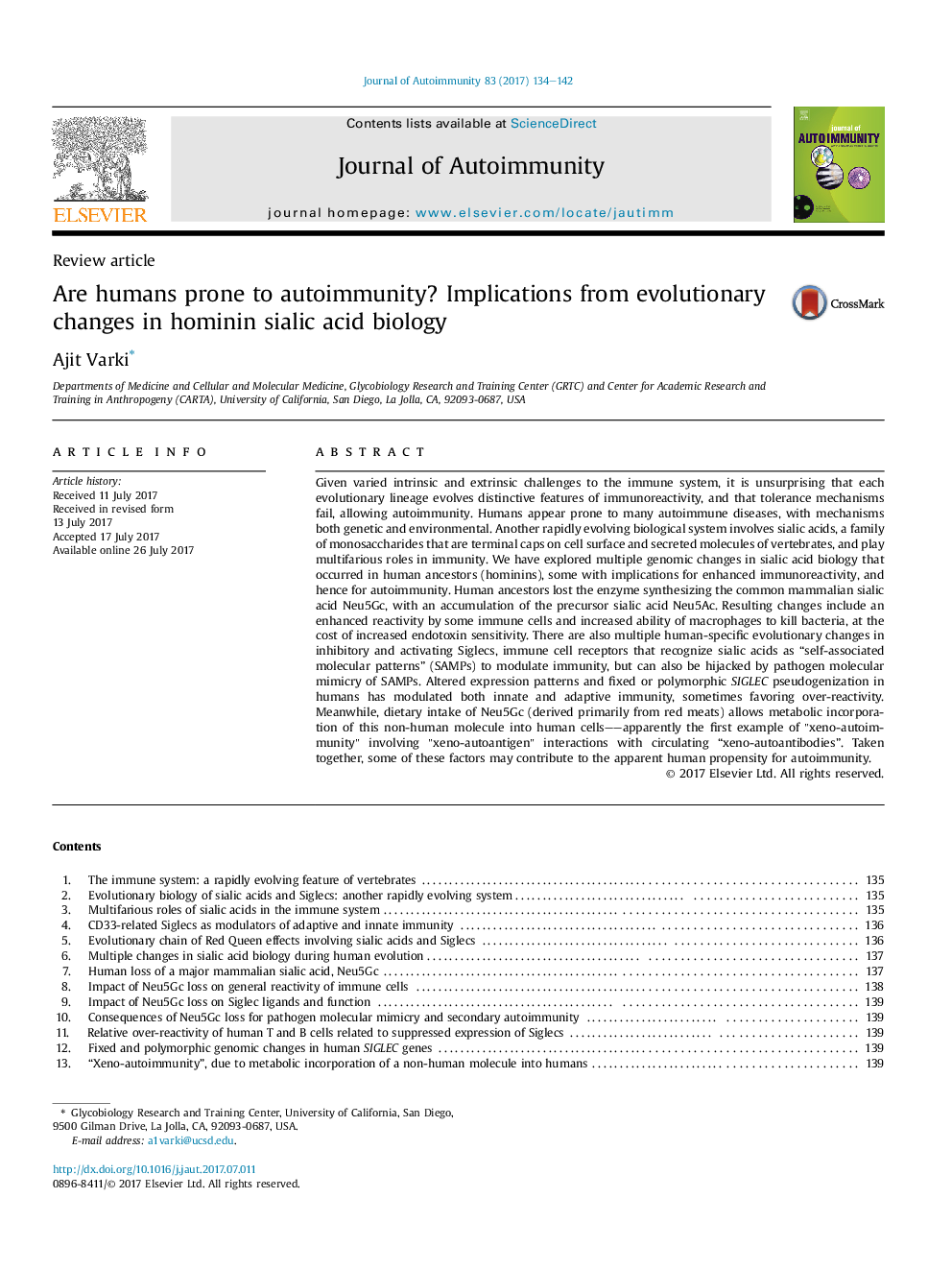| Article ID | Journal | Published Year | Pages | File Type |
|---|---|---|---|---|
| 5667849 | Journal of Autoimmunity | 2017 | 9 Pages |
â¢Each evolutionary lineage has distinctive features of immunoreactivity and autoimmunity.â¢Humans appear prone to autoimmunity, via genetic and environmental factors.â¢Another rapidly evolving system involves sialic acids which play multifarious roles in immunity.â¢Many genomic changes in sialic acid biology in human ancestors, implications for autoimmunity.
Given varied intrinsic and extrinsic challenges to the immune system, it is unsurprising that each evolutionary lineage evolves distinctive features of immunoreactivity, and that tolerance mechanisms fail, allowing autoimmunity. Humans appear prone to many autoimmune diseases, with mechanisms both genetic and environmental. Another rapidly evolving biological system involves sialic acids, a family of monosaccharides that are terminal caps on cell surface and secreted molecules of vertebrates, and play multifarious roles in immunity. We have explored multiple genomic changes in sialic acid biology that occurred in human ancestors (hominins), some with implications for enhanced immunoreactivity, and hence for autoimmunity. Human ancestors lost the enzyme synthesizing the common mammalian sialic acid Neu5Gc, with an accumulation of the precursor sialic acid Neu5Ac. Resulting changes include an enhanced reactivity by some immune cells and increased ability of macrophages to kill bacteria, at the cost of increased endotoxin sensitivity. There are also multiple human-specific evolutionary changes in inhibitory and activating Siglecs, immune cell receptors that recognize sialic acids as “self-associated molecular patterns” (SAMPs) to modulate immunity, but can also be hijacked by pathogen molecular mimicry of SAMPs. Altered expression patterns and fixed or polymorphic SIGLEC pseudogenization in humans has modulated both innate and adaptive immunity, sometimes favoring over-reactivity. Meanwhile, dietary intake of Neu5Gc (derived primarily from red meats) allows metabolic incorporation of this non-human molecule into human cells--apparently the first example of "xeno-autoimmunity" involving "xeno-autoantigen" interactions with circulating “xeno-autoantibodies”. Taken together, some of these factors may contribute to the apparent human propensity for autoimmunity.
